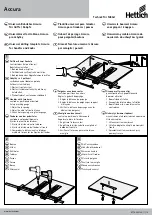
08
Switching on and off
• Connect the soldering iron to the mains to switch it on and to heat it up.
• Disconnect the soldering iron from the mains to switch it off and to cool it down.
4. Using the soldering iron
d
e
CAUTION DANGER OF BURNS!
The soldering iron, the soldering tip and the soldering iron holder
remain hot for some time after disconnection from the mains!
Working with the device (fig. D / E)
• Connect the mains cable (6) with a suitable mains supply and store the soldering iron with
the tip in the tool holder (15) of the tool stand (1). Allow the soldering iron to heat up. This
can take approximately 3 to 5 minutes depending on the required working temperature.
• Before soldering the soldering tip has to be tinned. Heat up a new or a soldering tip that
has been cleaned with the cleaning sponge (2) and coat it by making contact with the
solder wire.
• Before starting work on the a particular workpiece and/or type of material, check for
suitability by testing the soldering iron on a similar piece of (scrap) material.
• Clean the parts you wish to join before starting to solder.
- Touch the edge of the flux-cored solder wire on to the very end of the soldering tip (6) to
melt the solder wire. The workpiece is coated with the flux, which flows out of the solder
wire, allowing the solder to join the metal.
• If the soldering iron is used for longer periods we recommend that you clean the tip
occasionally with the cleaning sponge (2) and re-tin the tip if necessary. Use a de-
soldering braid (not supplied) to clean the joint, to de-solder and to remove excess
solder from the joint. Cover the excess solder with the de-soldering braid and heat up the
soldering tip (9). The melting solder is soaked up by the de-soldering braid.































